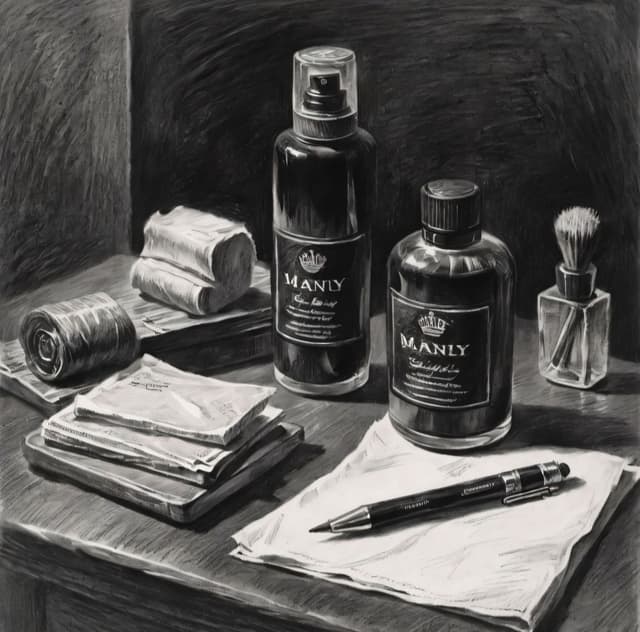A Complete Beginners Guide To Men Fragrances

Welcome to the world of fragrances. In this article, you will traverse the alluring road of fragrances. The reality of it is that most of the world's population doesn't wear fragrances, and the majority of the few that do don't even know or understand what exactly they are wearing. Fragrances aren’t just about smelling good; they’re a personal signature, an invisible accessory that leaves a lasting impression. In this guide, we will start from the basics, breaking down different types of fragrances, notes, concentration, how to choose your first fragrance, and more. By the end, you’ll feel confident enough to explore, experiment, and elevate your scent game.
Let's begin.
Fragrance Families
Firstly, let's talk about fragrance families. There are four generally accepted fragrance families that we use today: fresh, floral, amber, and woody. However, in the past, words like fugere and oriental were also used to categorize fragrances. The fresh family includes smells that are clean, vivid, and stimulating, typically inspired by nature. It has citrus (e.g., lemon, bergamot), green (e.g., freshly cut grass), and aquatic (e.g., ocean breeze) notes. Ideal for the daytime and warmer seasons ( Fragrance Families—The Perfume Society). I bet you're wondering, "What are fragrance notes?" Don’t worry, we’ll get into that later. For now, let's talk about the other families. Floral fragrances primarily smell of fresh flowers like rose, jasmine, lily, and peony.
These perfumes can be single-note (soliflore) or a harmonious combination of multiple floral notes, frequently evoking sentiments of romance and elegance (The Perfume Society).
As it relates to amber fragrances, they are known for their rich, warm, and exotic character, with notes of vanilla, resins, spices, and musk. The term "oriental" has been replaced with "amber" to more inclusive and respectful terminology (The Name Change—Vogue Article). Finally, we have woody, with warm, dry, and earthy notes like sandalwood, cedar, vetiver, and patchouli; this family embodies the spirit of the forest. Fragrances with woody notes tend to be elegant and grounded (Fragrance Families—The Perfume Society). I know that was a lot to take in, but just bear with me.
Fragrance Notes
Now let's break down “fragrance notes.” There are three commonly known fragrance notes: the top note, middle note, and base note.
- ✅ Top notes: This is the initial smell you get after immediately applying a fragrance; the top notes are usually light, fresh, and citrusy; sometimes lavender or rose can also be used as a top note. These types of notes usually evaporate relatively quickly to make way for subsequent notes.
- ✅ Middle Notes: They emerge after the top notes have been evaporated. The middle notes are the heart of the fragrance, containing notes like jasmine and geranium, as well as spices such as cinnamon and nutmeg to complement a smooth transition to the base notes.
- ✅ Base Notes: They are the final layer of notes you will meet in your fragrances. Base notes are rich, deep, and long-lasting; they usually contain notes like sandalwood, vanilla, and musk, which form the foundation of the fragrance .
Fragrance Concentrations
The next aspect we need to discuss is fragrance concentrations. Fragrances are manufactured at different concentrations; fragrance concentration simply refers to the percentage of aromatic compounds within a fragrance. The most commonly used fragrance concentrations are Eau de Toilette (EdT), Eau de Parfum (EdP), and Pure Parfum or Extrait de Parfum. However, you do have fragrances at lower concentrations, like Eau de Cologne (EdC) and Eau Fraîche. With that out of the way, let's discuss the percentage of aromatic compounds typically found at different concentrations.
- ✅ Eau de Toilette (EdT): 5–15%
- ✅ Eau de Parfum (EdP): 15–20%
- ✅ Pure Parfum (Extrait de Parfum): 20–30% (Scent Store—Perfume Explained)
Fragrances with higher concentrations usually tend to last a little bit longer seeing that they have a higher percentage of aromatic compounds; however, this is not set in stone; there are many instances where fragrances at lower concentrations last longer than the ones at higher concentrations. Many factors can affect the longevity of a fragrance, such as the brand, age, and the overall note breakdown of the fragrance. But as it relates to concentration, you will realize that fragrances at lower concentrations typically don't last as long as the ones at higher concentrations, but, there is a caveat: fragrances at lower concentrations usually project more as a result of having fewer aromatic compounds; they evaporate and push off the skin more, hence having a shorter fragrance lifespan (again, this varies). One more thing to note is that the price of a specific line of fragrance usually increases as the concentration increases, so an EdP is going to be slightly more expensive than an EdT.
Key Fragrance Terms: Projection, Longevity, and Sillage
Okay, with that out of the way, let's talk about some general terms that every fragrance enthusiast should know, terms like projection, longevity, and sillage.
- ✅ Projection: This refers to how far a fragrance radiates from your skin into the surrounding environment. It's essentially the scent's reach or the "aura" it creates around you. A perfume with strong projection can be detected from a distance, making it more noticeable to others. Factors influencing projection include the concentration of perfume oils and environmental conditions. Longevity: This denotes the duration a fragrance remains detectable on your skin after application. It's a measure of how long the scent lasts before it fades away.
- ✅ Sillage: (pronounced "see-yazh") describes the scented trail left behind as you move. It captures how a fragrance lingers in the air after you've passed by. While related to projection, sillage specifically pertains to the scent's diffusion in your wake, influenced by motion and ambient temperature.
Building Your Fragrance Wardrobe
Now that we have a sound understanding of fragrances, we can move on to building our very own fragrance wardrobe. Now, seeing that you're probably completely new to fragrances, you'll need to get your nose on as many fragrances as you can just to get a feel for what you like and what you would wear. One of the best things you can do is go to your local fragrance store and smell some of the testers that are on display to see what works for you and what doesn't, or you can always watch videos to get recommendations if there is anything that peaks your interest and order samples of that fragrance online. For your very first fragrance, I would recommend something that is versatile and can be worn all year round, and that's typically going to be your blue-smelling fragrances. Fragrances like Versace Dylan Blue, Dior Sauvage, and Bleu De Chanel are all solid blue fragrances. From there, you can start branching off into specific seasonal fragrances.
- ✅ Winter & Fall: Heavier, sweeter, warmer, richer, and spicier scents that can push through the cold.
- ✅ Spring: Greener and fresher scents with a bit more body.
- ✅ Summer: Citrusy, fresh, and aquatic fragrances that feel light and airy.
Where to Buy Fragrances
With that being said, let's talk about where you should buy fragrances. I would strongly recommend buying fragrances at fragrance discount stores online, because they are way cheaper; however, if money isn't an issue, you can always buy them at full retail price at your local Macy's or Sephora. As it relates to online discounters, I would recommend:
- ✅ USA: Jomashop
- ✅ Canada: FragranceBuy
- ✅ Europe: Notino
These are all reputable and popular sites that are known for selling authentic fragrances at discount prices.
And remember, fragrances are more than simply scents; they're an expression of your personality and a tool for making a lasting impression. As you explore this world, don't be afraid to experiment and find the fragrance that best suits you. After all, the correct smell not only complements your wardrobe, but also completes your appearance.
